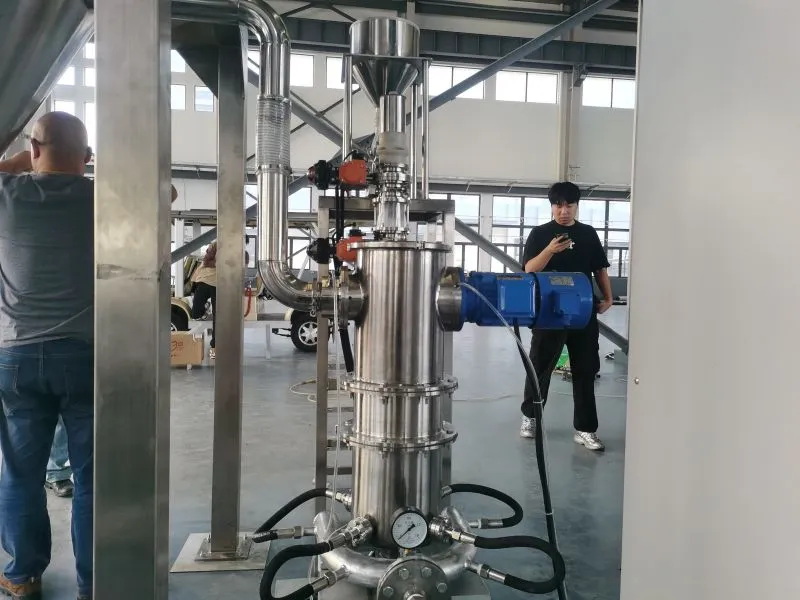Jet milling is a popular mechanical milling technique used in various industries to achieve particle size reduction. In this process, high-pressure jets of gas or air are used to disintegrate solid materials into fine particles. This article will provide a comprehensive overview of jet milling, including its advantages and disadvantages.

Introduction to Jet Milling
Jet milling, also known as fluid energy milling, is a size reduction process that utilizes high-velocity jets of gas or air to pulverize solid materials into smaller particles. It is commonly used in industries such as pharmaceuticals, chemicals, food processing, and minerals. The principle behind jet milling involves the collision of particles with each other or with the walls of the milling chamber, resulting in the fragmentation of the material.
Advantages of Jet Mill
1. Particle Size Control: Jet mill offers excellent control over particle size distribution. By adjusting the operational parameters such as gas pressure, feed rate, and classifier wheel speed, it is possible to achieve a narrow particle size distribution. This is particularly important in industries where uniform particle size is critical, such as pharmaceuticals.
2. High Efficiency: Jet mill is known for its high efficiency in particle size reduction. The high-velocity jets of gas or air create intense turbulence within the milling chamber, resulting in rapid and effective disintegration of the material. This leads to shorter milling times and increased productivity.
3. No Heat Generation: Unlike other milling techniques, such as ball milling, jet milling does not generate excessive heat during the process. This is beneficial for heat-sensitive materials that may degrade or undergo chemical reactions at elevated temperatures.
4. Minimal Contamination: Jet mill is a closed system, which minimizes the risk of contamination from external sources. The milling chamber is sealed, preventing the entry of foreign particles. Additionally, the use of inert gases as the milling medium further reduces the likelihood of contamination.
5. Versatility: Jet milling can be used for a wide range of materials, including soft and hard solids. It is suitable for both brittle and ductile materials, making it a versatile milling technique.
Disadvantages of Jet Mill
1. Cost: Jet mill equipment can be expensive to purchase and maintain. The high-pressure gas or air supply required for the process adds to the operational costs. Additionally, the need for specialized equipment and skilled operators further increases the overall cost.
2. Energy Consumption: Jet milling requires a significant amount of energy due to the high-velocity gas or air jets. This can result in high energy consumption, making it less energy-efficient compared to other milling techniques.
3. Equipment Complexity: Jet milling equipment is complex and requires proper setup and maintenance. The presence of multiple components, such as compressors, classifiers, and cyclones, increases the complexity of the system. This may require skilled operators and specialized training.
4. Limited Scalability: Jet mill is generally more suitable for small-scale production due to its high operational costs and equipment complexity. Scaling up the process to larger production volumes can be challenging and may require significant investments in equipment and infrastructure.
5. Moisture Sensitivity: Some materials may be sensitive to moisture, and the use of gas or air jets in jet milling can introduce moisture into the system. This can affect the stability and quality of certain materials, necessitating additional drying steps.
Jet milling is a versatile and efficient size reduction technique widely used in various industries. Its advantages include excellent particle size control, high efficiency, minimal heat generation, and low contamination risk. However, it also has disadvantages such as high cost, energy consumption, equipment complexity, limited scalability, and moisture sensitivity. Understanding the advantages and disadvantages of jet milling is crucial for selecting the most suitable milling technique for specific applications.
